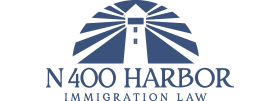
Getting an employer sponsored green card is an attractive path for many individuals seeking to establish a long-term career and life in the United States.
IN THIS ARTICLE
These green cards are a gateway to permanent residency, enabling foreign nationals to live and work in the U.S. indefinitely. In this comprehensive guide, we will explore the various types of employer-sponsored green cards, their specific requirements, and the application process involved.
What is an Employer Sponsored Green Card?
An employer sponsored green card refers to an immigrant visa issued to foreign professionals based on a job offer from a U.S. employer. These green cards fall under the category of employment-based (EB) immigrant visas, which are divided into five preference categories from EB-1 to EB-5.
Each category has unique qualification criteria and caters to a specific group of professionals or workers. The employer, acting as a sponsor, files an immigrant petition with the U.S. Citizenship and Immigration Services (USCIS) on behalf of the foreign worker. The primary goal is to extend the employee’s stay in the U.S. from temporary to permanent, allowing them to lawfully reside and work in the country.
5 Types of Employer Sponsored Green Card
There are five primary preference categories of employment-based green cards. Let’s delve into each category to understand their unique attributes and requirements.
1. EB-1: Priority Workers
The EB-1 category is dedicated to “priority workers.” This class includes individuals with extraordinary abilities in the sciences, arts, education, business, or athletics. Also included are outstanding professors, researchers, and certain multinational managers and executives.
1.1 EB-1(a): Extraordinary Ability
This sub-category is for individuals who can demonstrate extraordinary ability in the sciences, arts, education, business, or athletics through sustained national or international acclaim. The achievements must be recognized in the field through extensive documentation.
1.2 EB-1(b): Outstanding Professors and Researchers
This sub-category is for professors and researchers who are internationally recognized for their outstanding achievements in a specific academic field. They must have at least three years of experience in teaching or research in that academic area.
1.3 EB-1(c): Multinational Managers or Executives
This sub-category is for managers and executives who have been employed for at least one year by the overseas affiliate, parent, subsidiary, or branch of the U.S. employer.
2. EB-2: Advanced Degree or Exceptional Ability
The EB-2 category of Employer Sponsored Green Cards is for professionals holding advanced degrees or their equivalent and individuals with exceptional ability in the sciences, arts, or business.
2.1 EB-2(a): Advanced Degree
This sub-category is for individuals with an advanced degree (beyond a baccalaureate degree) or a baccalaureate degree and at least five years of progressive experience in the profession.
2.2 EB-2(b): Exceptional Ability
This sub-category is for individuals with exceptional ability in the sciences, arts, or business. Exceptional ability means having a degree of expertise significantly above that ordinarily encountered in the sciences, arts, or business.
2.3 EB-2(c): National Interest Waiver
This sub-category is for individuals with exceptional ability, and whose employment in the United States would greatly benefit the national interest.
3. EB-3: Skilled, Professional, or Other Workers
The EB-3 category is for skilled workers, professionals, and other workers. This category generally has a longer waiting time compared to EB-1 and EB-2 due to higher demand.
3.1 EB-3(a): Skilled Workers
This sub-category is for individuals with at least two years of job experience or training.
3.2 EB-3(b): Professionals
This sub-category is for individuals with a U.S. baccalaureate degree or foreign equivalent who are members of a profession.
3.3 EB-3(c): Other Workers
This sub-category includes individuals performing unskilled labor requiring less than two years of training or experience.
4. EB-4: Special Immigrants
The EB-4 category is for “special immigrants,” which include various religious workers, employees of U.S. foreign service posts, retired employees of international organizations, alien minors who are wards of courts in the United States, and other classes of aliens.
5. EB-5: Immigrant Investors
The EB-5 category of Employer Sponsored Green Cards is reserved for foreign investors who invest a significant amount of money in a new commercial enterprise in the U.S. This category requires a minimum investment of either $500,000 or $1,000,000, depending on the geographical area, in a commercial enterprise that will create or preserve 10 full-time jobs for qualifying U.S. workers.

The Green Card Application Process
The application process for an employer-sponsored green card involves several steps, and the specifics can vary depending on the category of the green card and whether the applicant is already within the U.S.
1. PERM Labor Certification
In most cases, the first step in the process is obtaining a PERM Labor Certification from the Department of Labor (DOL). This certification verifies that there are insufficient available, qualified, and willing U.S. workers to fill the position being offered at the prevailing wage and that hiring a foreign worker will not adversely affect the wages and working conditions of similarly employed U.S. workers.
2. Filing Form I-140, Immigrant Petition for Alien Worker
Once the PERM Labor Certification is approved, the employer needs to file Form I-140, Immigrant Petition for Alien Worker. This form is used to petition USCIS to classify the foreign worker as eligible for an immigrant visa based on employment.
3. Applying for the Green Card
After approval of the I-140 petition, the foreign worker can apply for a green card through either Adjustment of Status (AOS) if they are in the U.S. or Consular Processing if they are abroad. Consular Processing involves applying for and completing an immigrant visa interview at a U.S. Embassy or Consulate in the foreign worker’s home country. Adjustment of Status involves filing Form I-485, Application to Register Permanent Residence or Adjust Status, to change the foreign worker’s current non-immigrant status to permanent resident status.
Wrap Up
An employer sponsored green card can offer a valuable pathway to long-term residency in the U.S. for foreign workers. Understanding the different categories and their unique requirements is a vital first step towards a successful application.
As always, it’s advisable to seek professional guidance to navigate the complexities of the U.S. immigration system. Remember, every journey to permanent residency is unique, but with the right knowledge and resources, you can make informed decisions about your pathway to a U.S. green card.

